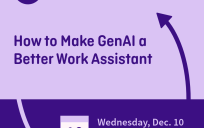 Inviting a crowd into change and innovation initiatives is becoming increasingly common. Some research & development groups invite the crowd to share ideas and suggestions in an ideation phase. Some groups look to the crowd during additional refinement or discovery phases. Some groups look to the crowd to estimate the potential value of an idea. And now the government even reaches out to their employees and citizens for help in managing their continuous improvement programs.
Inviting a crowd into change and innovation initiatives is becoming increasingly common. Some research & development groups invite the crowd to share ideas and suggestions in an ideation phase. Some groups look to the crowd during additional refinement or discovery phases. Some groups look to the crowd to estimate the potential value of an idea. And now the government even reaches out to their employees and citizens for help in managing their continuous improvement programs.
In 2013, the state of Texas introduced an administrative code that stipulated any state agency with 1,500 or more employees must provide a process by which an employee may submit suggestions and ideas for cost savings and allow the public to vote on those ideas. The Texas Health and Human Services Commission selected IdeaScale as their idea voting platform, because it saved them the costs and complexity associated with building their own platform. They were one of the first agencies to be in compliance with this new code.
Somewhat uniquely, the Texas Department of Health & Human Services invites two different crowds to participate in two ends of this process. First, they invite their crowd of employees who is uniquely suited to identifying potential problems and solutions for a government organization. The whole process begins when an employees submits an idea.
Again uniquely, the process also ends with a different crowd. In the final vetting stage (after an idea has been built out and evaluated by subject matter experts), the public is invited to vote on the best ideas. The most popular ideas are funneled back to the appropriate department for potential implementation.
This distinctive process offers a compelling use case for collaboration between two very important groups of people: employees (who can perform a degree of internal market research) and the public (who can provide feedback on what is most important to them from an external perspective). Sadly, a lot of organizations don’t ask for input from either group and these firms are the ones that rapidly fall behind. And firms that incorporate the voices of both groups are sure to find truly valuable ways to not just save money, but revolutionize their processes and their offerings. We see it all the time at IdeaScale.
If you’re interested in learning more about Texas HHS and the program that they built around this new administrative code, download the case study here.





Leave a Reply
You must be logged in to post a comment.